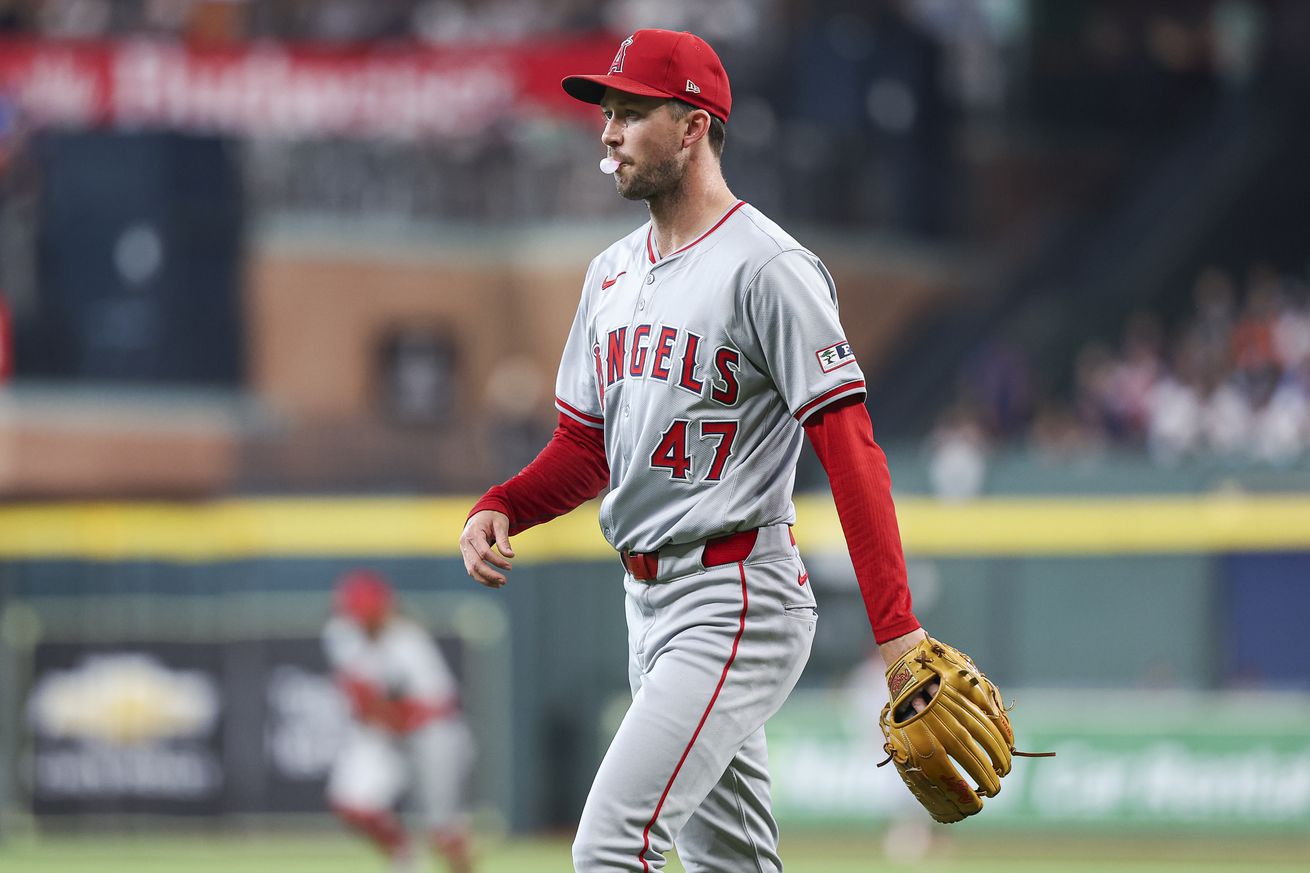
It’s a perfectly fine depth move.
In mid-December, right as most of us were preparing for to depart for the holidays, the Mets made another pitching addition, signing Griffin Canning to a one-year, $4.25 million deal. The deal also contains $1 million in potential bonuses. Canning, a longtime Angel, had previously been traded to the Braves earlier in the offseason as part of the Jorge Soler salary dump. Atlanta elected to non-tender him rather than pay his estimated $5.1 million arbitration award, and he’ll now have an opportunity to earn just about the same money as part of the Mets’ staff.
Canning, like so many other Angels pitchers, has at times flashed intriguing ingredients, but never been optimized enough to pull it all together. At the start of his career in 2019 and 2020, he was a high-strikeout starter who struggled with walks and giving up too much hard contact, but he still looked like a high low-to-mid 4s ERA starter on true talent. A disastrous 2021 saw the end of that; Canning was so bad that the woeful Angels optioned him to Triple-A, and he ultimately hit the injured list with a stress fracture in his back. Set backs in the recovery from that injury kept him out for the entirety of 2022 as well.
Back on the field in 2023, it seemed like Canning might have his career back on track. He again struck out a lot of batters, posted the lowest walk rate of his career, made 22 starts, and logged a 4.32 ERA that was roughly supported by his peripherals. Then it all fell apart last season. His fastball lost a tick of velocity, all of his secondary offerings slipped, the strikeouts vanished, the walks ballooned, and his ERA settled in a 5.19. About the only thing you can say is that Canning stayed healthy – he tossed 171.2 innings – but everything else was very, very bad.
It seems the Mets are throwing $4 million and change at a reclamation project here, but what did they actually see that has them intrigued? Well, thanks to great work from Lance Brozdowski (go subscribe to his Substack, he’s one of the best public facing baseball minds out there right now), we don’t actually need to work to hard to find out. Canning started flashing a very intriguing sweeper in his last two starts, one with average movement (12” of sweep, -1” of drop) but well-above-average velocity at 85 MPH. It’s the sort of pitch that could form the basis of a rebuilt arsenal, something useful to build around.
Lance’s conclusion is that he’d like to focus on bringing back that lost tick of velocity for Canning and make him work as a starter. I don’t agree with that, however, because I think the fastball is just too bad to save. Since returning from injury—including his semi-effective 2023 season—stuff models have absolutely hated Canning’s primary offering. PitchingBot (20-80 scale, 50 is average) rated it as as a 41 in 2023 and a 37 in 2024, while Stuff+ (100 is average) graded it as a 78 and 73 respectively. Simply put, the movement profile is too average—also referred to as having a “deadzone” fastball—to fool batters, and Canning doesn’t have near enough velocity to overcome that.
Instead, I think Canning works best as a reliever, spamming the new sweeper and limiting the use of his other less effective pitches. There’s room, of course, to play with his fastball shape or other characteristics of his pitch mix, but the layup is to lean into the new pitch and see what happens. The Mets staff currently has a lot of five-and-dive types (Tylor Megill, Frankie Montas, Clay Holmes as he transitions to the rotation) and other with injury questions (Kodai Senga), implying a potentially heavy innings load on the bullpen. That leads me to believe they’re envisioning a similar bulk role for Canning as I am, one that helps address the limited stamina of the Mets’ good but flawed starting pitching corps.
Now you might be thinking “sure, that sounds like a useful role, but why not sign a better pitcher to fill it?” Fair question, it’d be nice to have better talent everywhere. Unfortunately, a better pitcher in Canning’s mold is not going to sign to be a 7th/8th starter or swingman; there’s not enough opportunity here. Unless you wanted the Mets to rush a top prospect like Brandon Sproat into this role or rely solely on less proven internal options (e.g., Dominic Hamel) who are probably not very good, either, this is the sort of signing you have to make.
Ultimately, this is an unexciting but fine move. There’s a chance that Canning doesn’t even survive spring training and the Mets just eat the $4.25 million hit. Not ideal, but not catastrophic. There’s also an outcome where the sweeper is a real plus pitch and Canning can be a valuable bridge pitcher in the middle innings. Not incredible, but nice to have. And there’s a median outcome where he’s a slightly better version of what he was before and is basically a net zero on the roster until Sproat replaces him at midseason. Again, we’re back to fine. With this year’s slightly harsher curve, fine is a B-.
